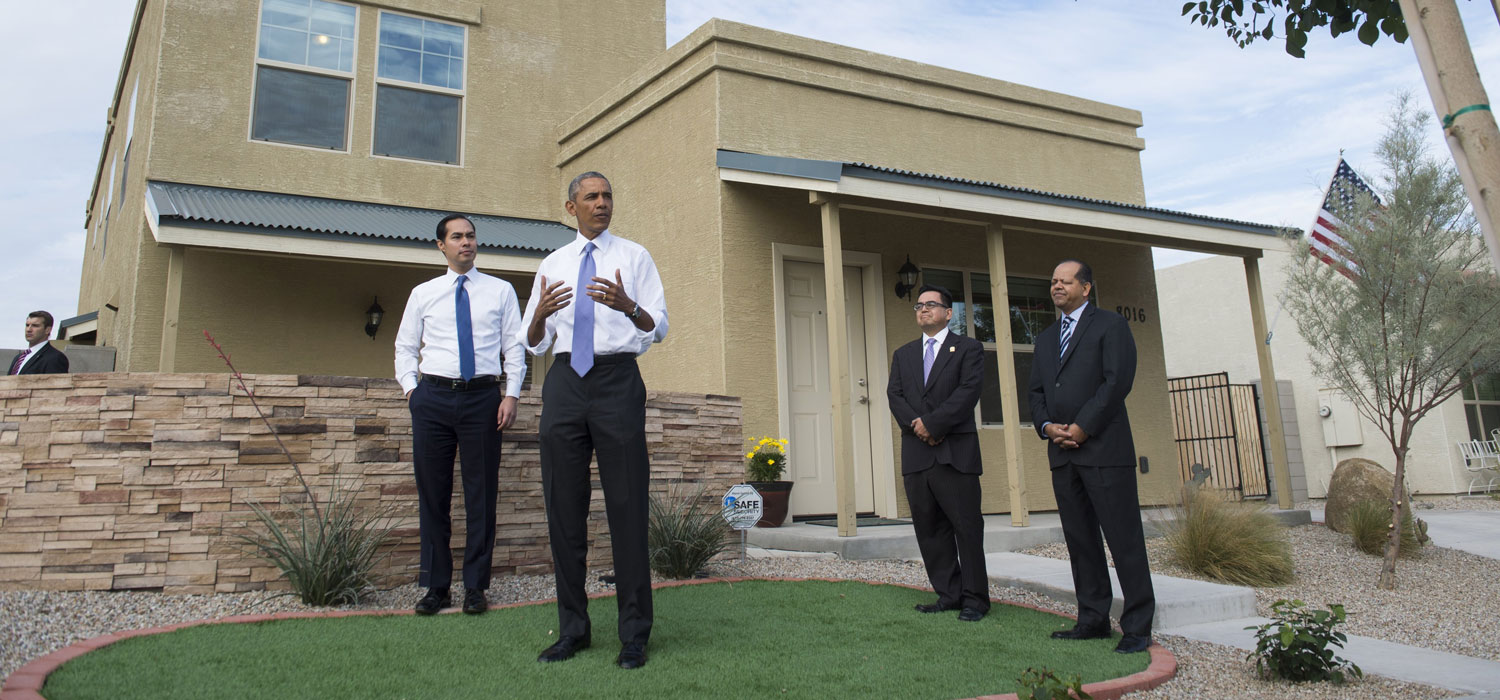
When President Obama took office on January 20, 2009, housing prices were in free fall, hundreds of thousands of jobs were being lost each month, and the lending industry was overwhelmed by a tidal wave of foreclosures.
At a panel discussion at the Urban Institute on Wednesday, senior Obama administration officials involved in housing policy discussed what it was like to face the crisis, how they approached addressing it, and the lessons they learned along the way.
Jared Bernstein, former chief economist and economic adviser to Vice President Biden, described the administration’s challenge of preventing the country from slipping into a full-scale depression.
“At one level, we’re approaching this as an illiquidity crisis and pumping credit into the system,” he said, “and at another level, we’re trying to figure out how to deal with the micro-level insolvency problem, the fact that so many people were facing foreclosure.”
Despite the severity of the crisis, policymakers had limited tools available to help shore up the economy. The Troubled Asset Relief Program (TARP) required the US Treasury to provide funds only to financial institutions, not homeowners, and limited Treasury to working within the existing financial infrastructure, which prevented setting up a new agency to deal with the problem.
Moreover, the resources available to address the challenges limited the policy levers that could be used.
Phyllis Caldwell, former chief of the Homeownership Preservation Office at Treasury, pointed out that they “had a $50 billion program [in TARP], and there was $750 billion of negative equity in the system. We could use all our money and not fix it.”
“Honk if I’m paying your mortgage”
These constraints and the novelty of the challenges at hand forced policymakers to be creative and adapt. Caldwell remarked on the intense criticism they faced over the earliest programs (e.g., the Home Affordable Modification Program, or HAMP) and their ongoing efforts to adjust. “We were certainly criticized a lot, so we changed a lot.”

Bernstein pointed out that they weren’t simply criticized on the left for doing too little, but they were pilloried on the right for doing too much, reminding the audience that the term “Tea Party” originated from CNBC commentator Rick Santelli’s criticism of the effort in HAMP to help “bail out” those who couldn’t pay their mortgage.
To drive home that message, Caldwell held up a bumper sticker mailed to her by a disgruntled taxpayer, which read, HONK if I’m paying your mortgage.
Notwithstanding that line of criticism, the group appeared to share at least one lesson from the crisis: the time for acute worry about moral hazard is not when the economy is in free fall and aggressive measures are needed, but before, when developing regulatory framework to avoid the next crisis.
What’s next?
The series of trials, errors, and lessons shared between federal agencies paid off. The market reached its bottom, the liquidity and insolvency crises reversed, and home prices, negative equity, and foreclosures changed course. Obama administration housing officials hope that history will look positively on their efforts to steer the country out of a downward spiral.
Much work remains, however, particularly in reforming the government-sponsored enterprises (GSEs) Fannie Mae and Freddie Mac.
“The GSEs are the great unfinished business of financial reform,” said Antonio Weiss, counselor to the Treasury secretary. “Where we have fallen short, I think, is that the GSEs, some 10 years on, are still in conservatorship, and the taxpayers are still exposed.”
As Weiss prepares to leave office, he raised a fundamental question: “How do you get the most for Americans out of our current housing finance system?”
Many challenges make it difficult to find an answer. “All of us know or have family members who are ‘locked’ in terms of their labor market mobility, their social mobility, and their life mobility by our current finance system,” Weiss said. “And there are tens of millions of Americans who do not have access to appropriate housing.”
It is the kind of question that policymakers have the luxury of asking only after surviving the dramatically different challenges they faced at the beginning of the administration.
At the same event, a second panel of thought leaders discussed where Republican leadership might take housing policy. We’ll report on that panel on Urban Wire next week.
Tune in and subscribe today.
The Urban Institute podcast, Evidence in Action, inspires changemakers to lead with evidence and act with equity. Cohosted by Urban President Sarah Rosen Wartell and Executive Vice President Kimberlyn Leary, every episode features in-depth discussions with experts and leaders on topics ranging from how to advance equity, to designing innovative solutions that achieve community impact, to what it means to practice evidence-based leadership.